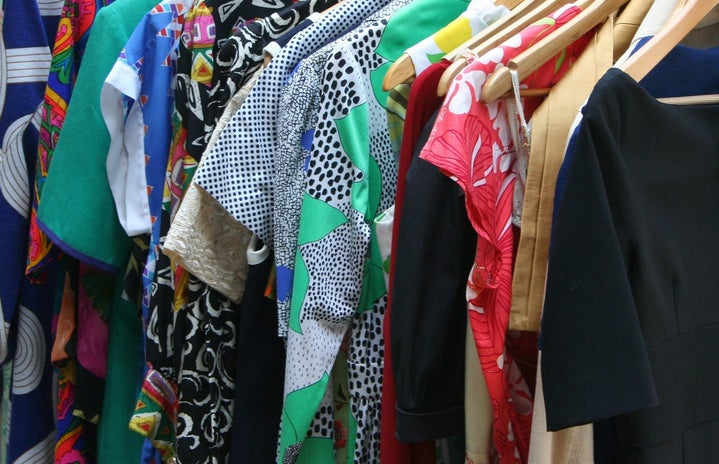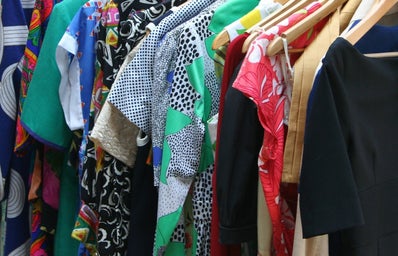There are endless ways to lower your environmental impact, from shopping with reusable bags, to cutting beef from your diet, to ditching plastic straws. But one environmental concern has just recently come to the forefront—fast fashion. When you think of ways to live sustainably, your closet probably isn’t your first thought, but it can make a huge difference for the environment.
Fast fashion refers to the clothing and accessories sold by large retailers that are trying to keep up with the latest trends. The pieces are usually cheap, and people don’t end up keeping them for long. This rapid mass production of clothes each season impacts the planet significantly.
According to Business Insider, fashion production makes up about 10% of human carbon emissions, and 85% of textiles end up in landfills every year. In addition, the article states that doing laundry “releases 500,000 tons of microfibers into the ocean each year—the equivalent of 50 billion plastic bottles.” Also, dying textiles is the second biggest cause of water pollution, according to The Independent. Polyester is a big culprit of these issues, as it releases more carbon emissions and plastic in the oceans than other fabrics, and cotton agriculture uses huge amounts of water and pesticides.
While all of these issues may seem daunting, there are ways you can help. Thrifting has grown into a huge trend in the last few years, and both buying used clothes and donating your clothes are easy and affordable ways to make an impact. You can also focus on buying clothes that are long lasting closet staples, like a black turtleneck, quality jeans, and a versatile blazer—things that go with everything that you’ll wear for years. In addition, take a good look at your wardrobe and find what’s missing. If there are items you constantly wish you had, go shopping with that purpose in mind so you only buy what you need. Quality over quantity is the way to go.
There are endless ways to repurpose your old clothing instead of throwing it out. First of all, you can fix clothing yourself or take it to a seamstress. The same goes for stains—there are lots of great stain remover products, and when all else fails, take it to the cleaners. You can use old clothes as rags, turn t-shirts into reusable grocery bags, and braid strips of clothing into dog toys. If you’re feeling particularly crafty, you can frame shirts for home décor or turn old clothes into baby clothes.
You should also find sustainable retailers to buy from. At Reformation, each clothing item comes with a description of its environmental impact. Everlane uses ethical factories and high quality materials, and they offer a great selection of basics that will stay in your closet for years. Patagonia has been focusing on their environmental impact for many years, and they practice sustainability in numerous ways. Allbirds is a shoe brand that is growing in popularity for their comfort and sustainable practices.
For a long time, fashion has been secretly harming the environment, but it’s time to draw attention to the issue. Take stock of your closet and shopping practices, and figure out how you can make an impact.
Want to keep up with HCBU? Make sure to like us on Facebook, follow us on Instagram, check out our Pinterest board, and read our latest Tweets!



